
Almanac
Japan
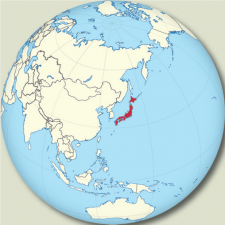
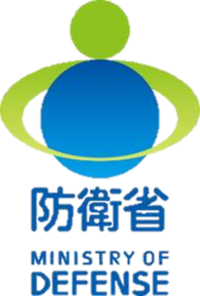
Surgeon General (CIV)
Dr Akira HARITA MD
Director General for Health and Medicine
Surgeon General:
- Yoshinori NAKAGISHI (Japan Ground Self-Defense Force), Major General
- Takehito SAWAMURA (Japan Maritime Self-Defense Force), Rear Admiral
- Tetsuya TSUJIMOTO (Japan Air Self-Defense Force), Major General
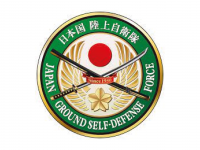
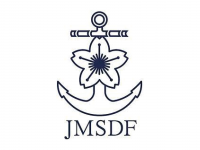
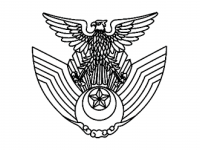
Source: Ministry of Defence Japan
The Military Health Services of Japan
National Context and Summary
Japan – Overview and Geostrategic Position
Japan lies to the east of the Eurasian continent and is located in the East Asia region. It is a maritime country consisting of relatively large islands (Hokkaido, Honshu, Kyushu and Shikoku) and other smaller islands, surrounded by the Pacific Ocean, the Sea of Okhotsk, the Sea of Japan, and the East China Sea. The country is more prone to natural disasters such as typhoons, earthquakes and tsunamis than other countries. Although Japan covers only 0.28%(about 378,000㎢) of the world’s land area, about 20% of the world’s earthquakes of magnitude 6 or greater occur in Japan, and 7% of the world’s active volcanos are located in Japan.
Nations and regions with strong military power are concentrated in Japan’s surroundings, where clear trends such as further military buildup and an increase in military activities are observed.
States in the Indo-Pacific region, including Japan, rich in political, economic, ethnic, and religious diversity. Also, each country has different security views and threats perceptions. Therefore, a regional cooperation framework in the security area has not been sufficiently institutionalized, and longstanding territorial and reunification issues in this region continue to remain.
Organization of the Ministry of Defense(MOD) and Japan Self-Defense Forces(SDF)
The National Security Council established in the Cabinet in December 2013 provides a platform to discuss important matters with regard to Japan’s security, and has been serving as a control tower for foreign, defense, and economic policies pertaining to national security. To fulfill their mission of defending Japan, the MOD/SDF consists of various organizations, mainly the Ground Self-Defense Force(GSDF), Maritime Self-Defense Force(MSDF) and Air Self-Defense Force(ASDF) as armed forces.
In order to rapidly and effectively fulfill the duties of the SDF, the MOD/SDF has adopted the joint operations system in which the GSDF, MSDF and ASDF are operated integrally. The Chief of Joint Staff develops a joint operations concept for SDF operations, and centrally support the Defense Minister on SDF operations from a military expert’s perspective. The Minister’s commands concerning the operations of the SDF are delivered through the Chief of Joint Staff, and orders concerning operations for the SDF are executed by the Chief of Joint Staff. In doing this, the Minister’s commands and orders are delivered through the Chief of Joint Staff not only in cases where a joint task force is organized, but also in cases where a single SDF unit is employed to respond. The Joint Staff undertakes functions relating to the operations of the SDF, while the Ground, Maritime and Air Staff Offices (staff organizations for the Minister of Defense concerning their respective services except operations of the SDF) undertake functions for unit maintenance, such as personnel affairs, building-up defense capability, and education and training.
National Health System
Japan has achieved the world’s highest average life expectancy and healthcare standards through its universal health insurance system. The system is characterized by ‘public health insurance coverage for all citizens’, ‘free choice of medical facilities(free access)’, ‘advanced medical care at a low cost’ and ‘social insurance system’. While maintaining these as the basis, public funds are invested to maintain universal health insurance. To prevent citizens from having to bear a heavy burden of medical expenses, there is a ‘high-cost medical expense benefit’ that provides reimbursement for the amount of medical expenses paid at medical facilities and pharmacies in excess of the maximum amount in one month.
SDF Health Services
The mission of medical services of the Japan Self-Defense Forces (SDF) is, to promote, protect and restore the health of SDF personnel to ensure that they are medically fit for accomplishing SDF missions.
For this purpose, the Ministry of Defense and the SDF have implemented consistent and comprehensive medical measures, from disease prevention to rehabilitation, including periodical medical examination and mental assessment, preventive medicine, adequate vaccination, regular follow-up for daily fitness enhancement and early therapeutic intervention up to full recovery of injuries or diseases. During disaster relief and other operational deployments, SDF medical services provide treatment, medical supply as well as medical evacuation.
Organizational Structure
Director General for Health and Medicine at Internal Bureau is a civilian officer who is primarily responsible for SDF’s medical service from administrative perspective, such as developing fundamental policy and compiling/requesting a budget in medical service of the SDF. He/She also assists Defense Minister and Administrative Vice-Minister as a medical expert. Medical Department of each Staff Office (Ground, Maritime and Air) formulates and supervises the implementation a plan of medical service of each service (GSDF, MSDF and ASDF). Each service has medical sections/units throughout Japan and they are responsible for medical service of their garrisons/bases. Besides these medical sections/units, there are various SDF medical institutions including each SDF hospital, National Medical Defense College.
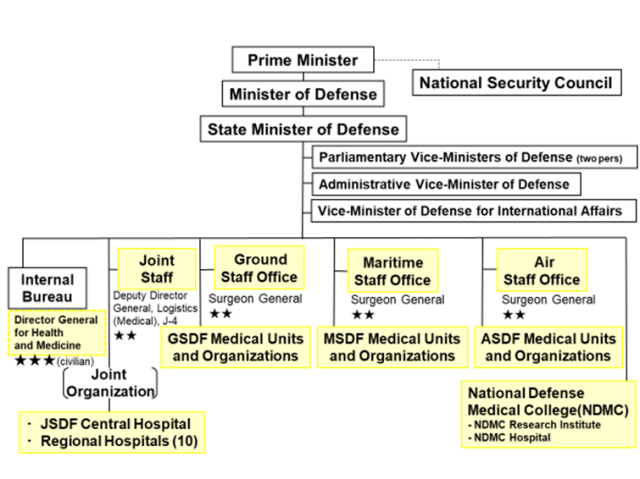
Source: Ministry of Defence Japan
Firm Base Health System
The SDF has 12 hospitals nationwide, including National Defense Medical College Hospital (Saitama) and the SDF Central Hospital (Tokyo), with some SDF district hospitals open to the public.
National Defense Medical College Hospital that is the biggest hospital in the MOD, with full spectrum of capability like other university hospitals. In time of emergencies, they extend their capacity, accept and treat injured people as evacuation hospital.
The SDF Central Hospital is unitedly operated as a cooperative organization of the GSDF, MSDF and ASDF. It has 29 clinical and 5 administration departments as well as the Institute of Medical Radiological Technologists and Vocational Skills Development Center, and it is also a clinical training hospital for doctors, etc. The hospital has a helipad where large transport helicopter such as CH-47 can take off and land.
Clinics providing medical services for SDF personnel are also attached to garrisons/bases of each service(GSDF, MSDF and ASDF) including the ones on MSDF ships. There are 192 dispensaries in total as of April 2023.
Regular force and civilian employees are the principal beneficiaries of the SDF health system. SDF Reserve Personnel, SDF Ready Reserve Personnel, and Candidates for SDF Reserve Personnel are also included in the beneficiaries. The SDF Central Hospital, National Defense Medical College Hospital and some SDF district hospitals are accessible to the general public.
They basically become uncovered by the SDF health system after retiring from active duty, and receive health care service from the employees’ health insurance system run by companies they are re-employed, National Health Insurance system where municipal governments become the insurers.
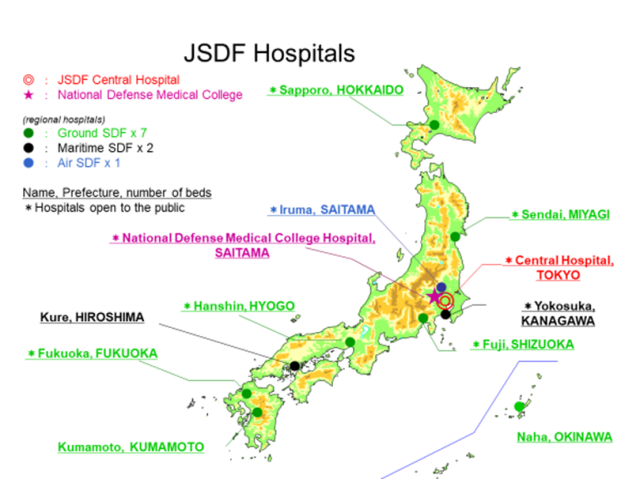
Source: Ministry of Defence Japan
(Medical Service of the Japan Ground Self-Defense Force(GSDF))
The mission of medical services of the GSDF is to support each unit as follows so that they can exert full fighting capability in human resources.
- To admit injured/diseased and provide them with treatment for their early return to work and life-saving
- To provide technical support etc. from the medical/health aspects to maintain their fitness
It is primarily responsible for ‘medical treatment and evacuation’, ‘technical support for healthcare from the medical aspect’, ‘technical support for epidemic prevention’ and ‘procurement, maintenance and upgrading of medical equipment.’
It has also developed the doctrine for life-saving designed to improve survival rate by reducing the time until performing damage control surgery after the injury as well as required time for medical transportation to treatment facility at each phase of the transportation. Based on the doctrine, it carries out improvement of medical support readiness/structure.
(Medical Service of the Japan Maritime Self-Defense Force(MSDF))
- Mission
To provide appropriate treatment and health management of members in a wide range of occupations, such as submarine, and aviation crews, to maintain and improve maritime strength - Function
- Treatment/Medical evacuation
- Health care
- Quarantine
- Supply and maintenance of medical equipment
- Research on diving medicine - Medical Treatment
- Provide medical care for SDF personnel and their dependents
- Each SDF hospital can provide hyperbaric oxygen therapy to patients with diving illness
- Establish a medical control system and create an environment that can provide appropriate medical care even at sea - Education / Research
- All medics are educated with the provision of medical care at sea in mind
- Research on diving medicine
(Medical Service of the Japan Air Self-Defense Force(ASDF))
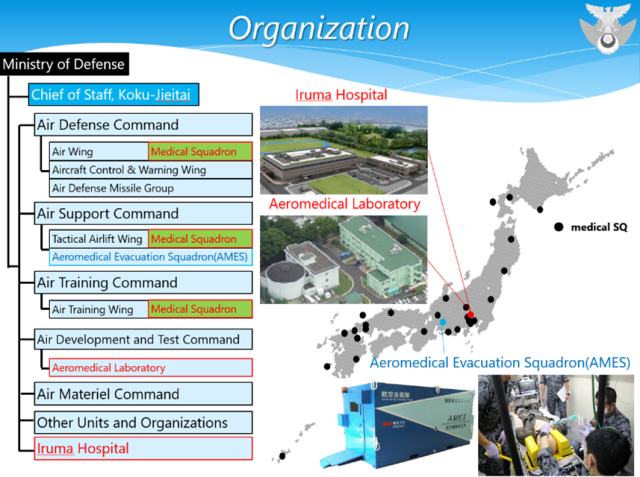
Source: Ministry of Defence Japan
The ASDF has one hospital (Iruma Hospital), 28 medical SQ, and 2 unique squadrons, Aeromedical Laboratory and Aeromedical evacuation squadron (AMES).
It has 3 organizational capabilities. The first one is casualty care. Air evacuation of AMES, tactical combat casualty care, mass casualty management and medical control are involved. Iruma Hospital provides high quality medical service. The second is health care. Iruma Hospital and medical SQ provide primary care, preventive care and mental healthcare. And the third is aeromedical. The Aeromedical Laboratory is responsible for aviation related medical and psychological research, and psychological training of aircrew. Iruma Hospital provides aeromedical education and training to flight surgeons, nurses/EMTs, and other ASDF medical personnel.
Military Medical Research and Innovation
(GSDF Military Medicine Research Unit)
Military Medicine Research Unit conducts medical tests and research such as tests on equipment that GSDF will introduce and carried out by Acquisition, Technology & Logistics Agency (ATLA) of MOD. The unit also performs research on battle injury prevention, temporary care, healthcare management and medical ergonomics.
(MSDF Undersea Medical Center)
MSDF Undersea Medical Center, located in Yokosuka - south of Tokyo, contributes to health promotion and safety improvement for personnel assigned to submarine and diving services through studies on medicine, physiology, psychology and ergonomics. In addition, the center provides education and training for saturation divers and diving medical officers. Through these activities, the center aims to contribute to further improvement of undersea technology in MSDF.
(ASDF Aeromedical Laboratory)
The ASDF has the Aeromedical Laboratory which conducts aviation related aeromedical and psychological research, tests and evaluation of life support system, aeromedical evaluation, aeromedical education and training for pilots, etc., using equipment including hypobaric chamber and G-acceleration training system.
(National Defense Medical College(NDMC) Research Institute)
NDMC Research Institute, attached to NDMC was established in 1996 as an organization specializes in critical care medicine which can respond to various mass casualty emergency events. It consists of 6 divisions – Division of Traumatology, Division of Biomedical Engineering, Division of Environmental Medicine, Division of Behavioral Science, Division of Bioinformation and Therapeutic Systems, and Division of Infectious Diseases Epidemiology and Control. Research there is conducted in collaboration with relevant research, clinical and administrative divisions based on the needs of operation of each service - GSDF, MSDF and ASDF and they aim to give the research results to the whole MOD/SDF systematically.
Operational Capabilities
For the SDF to perform its mission, SDF personnel must remain in good health through appropriate health management. It is also important for the SDF to make continued efforts to enhance and strengthen its capabilities in military medicine for protecting the lives of the personnel engaging in various tasks as much as possible. Under the circumstance where the SDF’s missions are becoming more diverse and internationalized, it is important to appropriately and accurately carry out various medical activities, such as medical support in disaster relief and international peacekeeping activities. Therefore, the MOD/SDF enhances and strengthens medical capabilities so that they can appropriately respond to various emergency events and carry out its multiple missions inside and outside of Japan.
The ‘National Defense Strategy’ released in December 2022 shows the national policy that the MOD/SDF develop an integrated operational capability by unifying medical roles and functions common to all SDF services so that the SDF can respond to various situations and undertake diverse missions both in Japan and abroad, and promote fundamental reforms to improve the combat trauma care capabilities.
National Defense Strategy released in December 2022
https://www.mod.go.jp/j/approach/agenda/guideline/strategy/pdf/strategy_en.pdf
Field Deployments
Medical component of SDF has been frequently dispatched for disaster relief domestically and internationally as well as PKO activities and counter-piracy activities, etc.
Capacity Building Activities
The MOD/SDF uses their own resources and aims to improve the capabilities of recipient countries, and to help their military forces broaden their roles so that they can further contribute to international peace and stability in the region. Since 2012, the MOD/SDF has engaged in capacity building activities in medical field including undersea medicine and aviation medicine and supported eight countries of the Indo-Pacific region through seminars (including via online) and field training, technical assistance, on-site observations of education/training and opinion exchanges etc. The MOD/SDF also cooperates with partner countries like the US and Australia, and effectively implements activities by leveraging their strength one another.
For more information,
https://www.mod.go.jp/en/capacity-building/
https://www.mod.go.jp/j/approach/exchange/cap_build/common/pdf/cap_build_e_panf_r03.pdf
Equipment for Field Deployment
(GSDF Mobile Medical Unit)
Mobile Medical Unit is composed of around 30 functional containers and some tents. Each container has different function. CT, ICU and many other functional containers can provide advanced medical treatment (equivalent to levels of 2-3 medical support for UN peacekeeping missions).
For disaster relief and international peacekeeping activities, the SDF chooses some of functional containers and tents tailored for the missions and deploy them to the theater.
Vehicle-mounted mobile CT scanner of this unit was dispatched to a cruise ship to treat patients with COVID-19 who were on board the ship.
(GSDF Field Surgical System)
Medical units of GSDF are equipped with Field Surgical System. This system consists of four vehicle units - surgical operation unit, surgical preparation unit, sterilization unit and sanitary supply unit and enables emergency medical care and primary surgical treatment.
GSDF deploys this system to forward area, the time from the injury to the operation is to be shortened, and the improvement of the lifesaving rate can be expected. As one example, the system was deployed near the summit venue to be prepared for any contingencies at the G7 Ise-Shima Summit in 2016.
(ASDF Mobile Medical Unit)
The ASDF has ”Mobile Medical Unit”, which can provide intensive care and is a (ICU)-style container type module with sound-proof, electro-magnetic shielding, lighting capabilities, three beds and various medical devices. By using this unit, critically ill or severe injured patients can be provided with appropriate intensive care and medical intervention to ensure the vital sign and functional prognosis during long distance transport by air, including using C-130H and C-2 aircraft. The unit has worked on more than 40 missions of transporting critically ill patients including 15 cases with ECMO (extracorporeal membrane oxygenation) (*as of Mar 2022) since it started operation in 2011.
Military Medical Personnel
National Defense Medical College(NDMC)
NDMC, established in 1973, is specialized in training medical doctors and nurses as SDF officers. Students receive fundamental education and training needed for future SDF officers as well as medicine. After graduation, they acquire skills as general practitioner at NDMC Hospital etc. and get clinical training for developing skills as clinical specialist.
People who want to become SDF medical doctors enroll in the National Defense Medical College(NDMC) and study there for 6 years after graduating senior high school. Approximately 80 students enroll in the doctor-training course every year. Nurse-training course consists of two types – one is for training uniformed personnel and the other is for civilian personnel. Approximately 75 students enter the course for uniformed personnel and 45 students enroll in the course for civilian personnel. They study for 4 years there to become nurses.
Refer to
NDMC does not have training course for dentists and pharmacists, and each service recruit dentist/pharmacist officers from among the students who studied dentistry/pharmacy at universities. Some medical doctors and dentists are employed through open recruitment system.
GSDF Medical Service School is one of the GSDF educational institutions and its mission is to train/educate medical service personnel so that they acquire the essential knowledge and skills. It also conducts research and study on medical operations, train for laboratory test technicians and emergency life-saving technicians.
Also, each service (GSDF, MSDF and ASDF) has been providing specific education and training for the SDF personnel who are licensed as both Licensed Practical Nurses and Emergency Life-Saving Technicians to acquire the necessary knowledge and skills, so that the SDF personnel with these licenses will be able to provide life-saving procedures to SDF personnel injured while performing their missions in the area where the injury occurred prior to their transfer to SDF hospitals and other medical facilities. The SDF personnel who completed this education and training curriculum are designated as “Frontline Medics”.
Civil-Military Relations
In the event of natural disasters and other disasters, the SDF, in cooperation and collaboration with local governments, conduct various activities such as search and rescue of victims, ships and aircraft in distress, flood prevention, medical care, quarantine, water supply and personnel transportation in any area in Japan.
In principle, Disaster Relief Dispatch is conducted as follows: prefectural governors or other officials ask the Minister of Defense, or an officer designated by the Minister, to dispatch the SDF units, etc. in the event of a natural disaster, and the Minister of the designated officer dispatches the units etc. if it is deemed necessary for the SDF to respond to the disaster. This procedure is based on the idea that prefectural governors and other officials should grasp the overall conditions of the disaster and their own disaster relief capabilities first, and then decide whether to make a request for the SDF disaster relief dispatch.
In response to COVID-19 pandemic, the SDF have engaged in transportation of emergency patients, quarantine support and training on epidemic prevention/control to local governments.
The SDF also opened up the large-scale vaccination centers in Tokyo and Osaka from May 24 to November 2021 and operated in collaboration with private sector in order to accelerate vaccination, and administered a total of 1.96 million vaccine doses. Since January 2022, the SDF has operated the large-scale vaccination venues both in Tokyo and Osaka, working in cooperation with private sector, to speed up booster shots in response to the spread of the Omicron variant (*as of early February 2023).
SDF activities at the SDF large-scale vaccination centers
https://www.youtube.com/watch?v=thzYpM7OTcQ
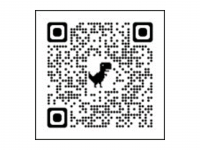
Source: Ministry of Defence Japan
(status: 24th June 2025)











